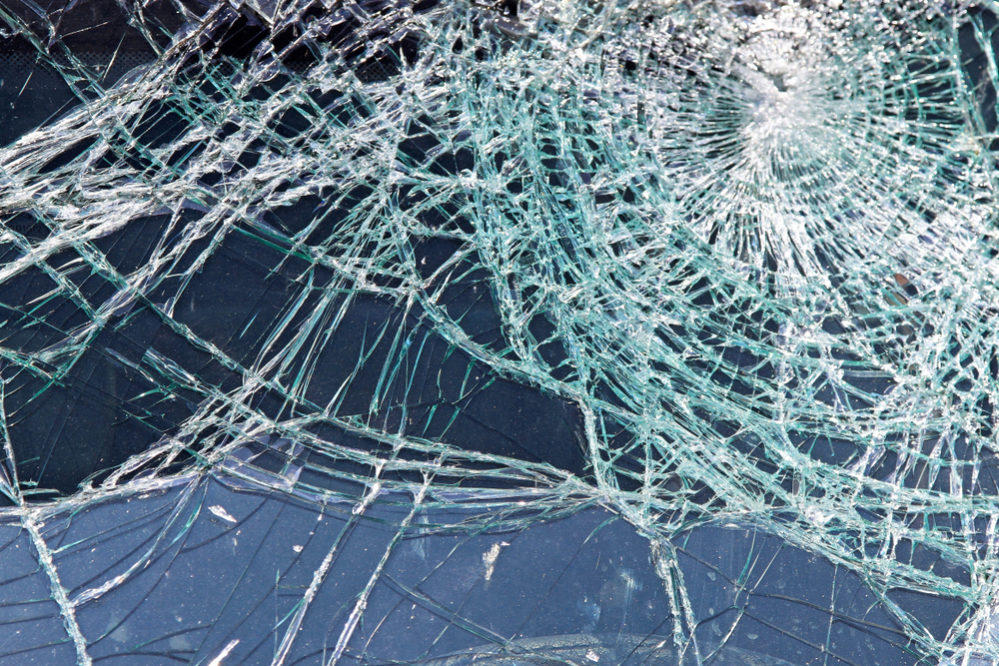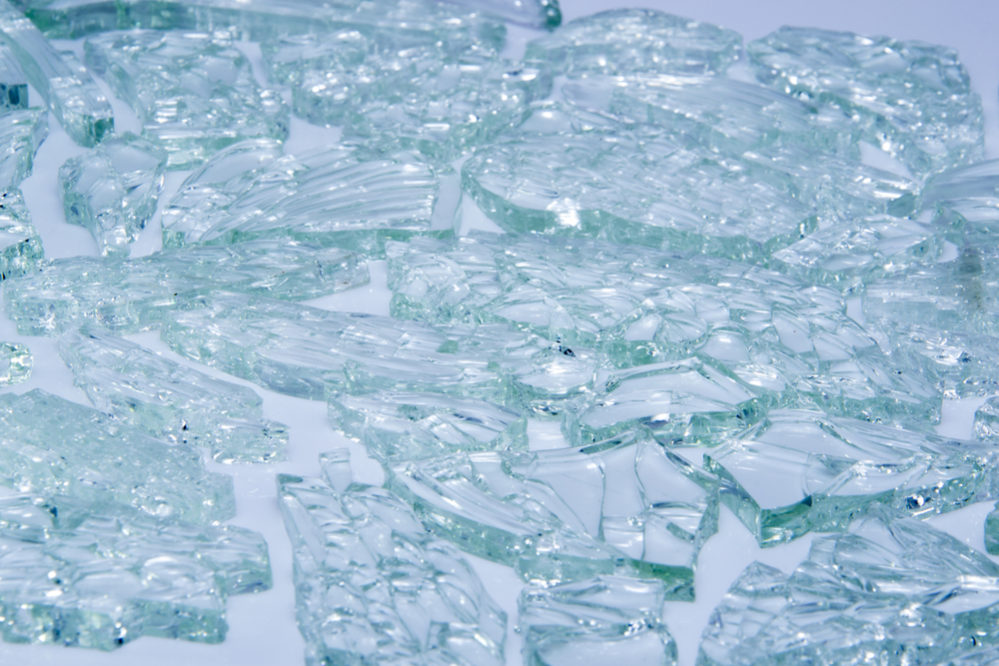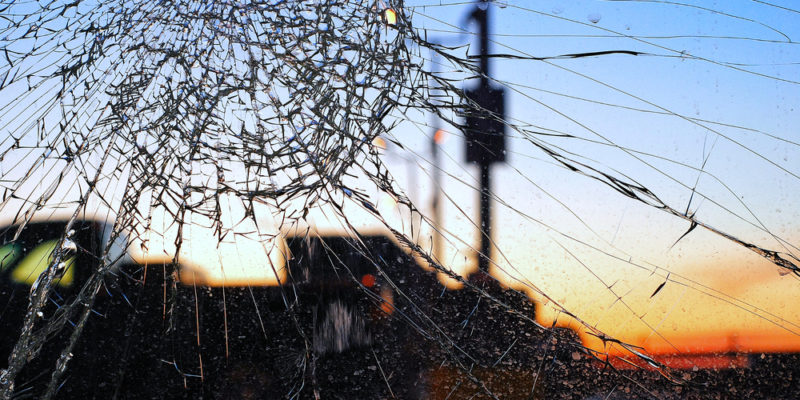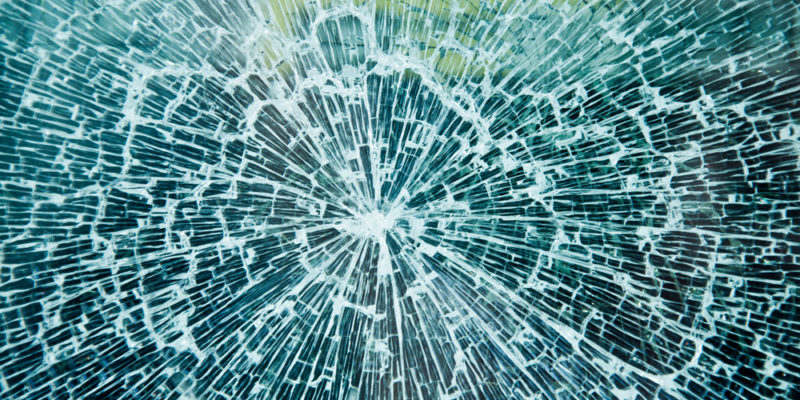Laminated glass and toughened glass are two types of safety glass. Often, people are mistaken when it comes to the differences between the two, or they believe that they’re the same thing. In actual fact, they’re very different, and are used for different purposes – even if they do look the same.
Safety glass is typically used on external windows and doors, glass balustrades, glass shelving and vehicle windows. Essentially, it’s used anywhere that it could cause immediate injury if broken.
Safety glass is usually toughened or laminated, but you can also find other variants too, such as wire mesh glass. These all offer the same end result in terms of protection from injury but they’re created differently and used for a variety of different products.
What is laminated glass?

Laminated glass consists of 2 sheets of glass that have a layer of plastic sandwiched between them. This layer of plastic is called polyvinyl butyral. Polyvinyl butyral acts as a barrier between the 2 sheets of glass and prevents them from breaking into shards or shattering into little pieces. The resistance to penetration provides additional security and the added layer also offers ultraviolet light protection, so prevents fading from sunlight.
Is laminated glass tempered?
Laminated glass and tempered glass are two different things. Tempered glass is standard glass that has been heat-treated to make it more durable.
Is laminated glass more secure?
As laminated glass has a layer of polyvinyl butyral between two sheets of glass, it makes it an incredibly secure glass-type. This material is used externally to heighten security which helps prevents break-ins.
Can laminated glass be cut?
Laminated glass can be cut to size. It is tricky to do though, and requires a professional to do it. Laminated glass can also be etched and sandblasted with your choice of design, unlike toughened glass.
How does laminated glass shatter?
Laminated glass doesn’t shatter. If laminated glass receives heavy impact, the glass will break however the plastic holds the glass in place. Removing any danger from broken glass.
What is laminated glass used for?
Laminated glass is typically used anywhere that human impact may occur and falling glass could add further danger. Laminated glass is used for:
- Car windscreens
- Glass floors
- Glass balustrades
- Full length internal and external windows and doors
- Skylights
- Public spaces where glass is used such as bar shelves and shop windows
Laminated glass isn’t as strong as toughened glass on initial impact, however it’s advantage over toughened glass is that it won’t fall to pieces when hit. The plastic sheet between the two sheets of glass acts as a barrier and will hold the glass in place until a replacement is found.
What is toughened glass?

Toughened glass is similar to tempered glass and follows the same strengthening process. However it’s much stronger. Toughened glass is designed to shatter into “break safe” fragments rather than shards, reducing the chances of injury.
Toughened glass is heated to high temperatures and then rapidly cooled to solidify it. It can also be heat-soaked and laminated if necessary.
Is toughened glass fire resistant?
Not all toughened glass is fire resistant. Standard toughened glass isn’t. You shouldn’t use toughened glass for doors if the door is a fire exit. However, you can purchase toughened glass that has been specifically designed for this purpose.
Can toughened glass be cut?
Toughened glass can be cut. And, like laminated glass, toughened glass can be cut to size, but not in the conventional sense.
Toughened glass cutting is a long and lengthy process. The glass must be heated to 500-degrees Celsius and slowly cooled. Once cool, the glass can then be cut. However, we recommend that any toughened glass is made to measure in the first instance to prevent issues.
How strong is toughened glass?
Toughened glass can be shattered with impact; it breaks up into hundreds of tiny pieces rather than shards, meaning it’s less likely to cause injury. However, the material is incredibly strong.
Toughened glass is stronger than you might think. For perspective, toughened glass is 5 times stronger than standard glass.
Can toughened glass be recycled?
Toughened glass cannot be recycled. Toughened glass has a much higher melting point than any other glass. If you recycle toughened glass there will still be large portions of unmelted glass which then causes quality issues for manufacturers.
What is toughened glass used for?
Toughened glass is used in places where human injury needs to be reduced, this is primarily for public services and public buildings. Toughened glass is used for:
- Phone booths
- Bus stops
- Glass shelves
- Splashbacks for kitchens
- Showerscreens
Toughened glass is the strongest form of glass. When compared to laminated glass, it takes a lot more force to break toughened glass than it does laminated. However, when toughened glass is broken, it will shatter into hundreds of tiny pieces.
Toughened and laminated glass are incredibly durable and provide safety to yourself, loved ones and the public. They are both created to prevent harm coming to human life if broken.
Which type of glass that you use largely comes down to personal preference. Both types of glass have their pros and cons and both are suitable for use in critical locations in the home. If you plan on using one of these glass-types, but you’re not sure which type would be best for you, please don’t hesitate to give us a call.


